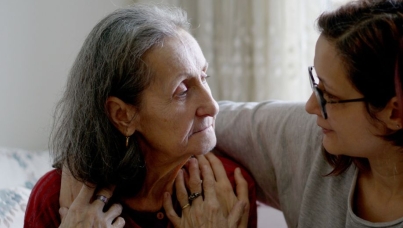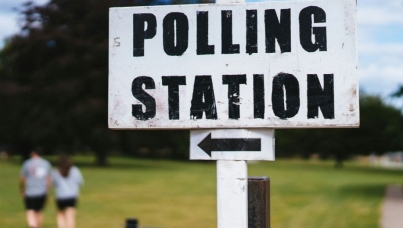Marginal Success?
MORI's analysis of voting intentions shows little evidence of a Conservative breakthrough in marginal constituencies.
During the Conservative Party's conference last year, Lord Saatchi reported that his private polling showed the Tories were leading Labour in most of the key marginal seats the party needed to win in the forthcoming General Election, despite national opinion polls by MORI and other research firms showing Labour retaining a healthy lead.
Without access to the Conservative's own private polling, the best evidence MORI has suggests this is unlikely to be the case. Before the reasons for this are explored, it is useful to be clear why the marginal constituencies are so important, and to set out how MORI has conducted this analysis.
The British electoral system is structured in such a way that the outcome of the General Election -- both in terms of which party forms the Government and the size of that party's Parliamentary majority over all other parties -- is determined in about 20% of all constituencies (i.e. the marginal seats). In theory, therefore, a winning party could lose the national vote, but win more seats because it performs better in the marginal constituencies than it does in the country as a whole. This happened in the US Presidential elections in 2000, and has happened twice in Britain over the past 50 years.
Most voting intention polls conducted by MORI, and other research firms, are designed to allow us to take a snapshot of opinion at a national level. So by polling 1,000 or 2,000 adults across the country in carefully selected sampling points we are able to measure voting intentions, at the time of the fieldwork, and extrapolate this, within a small margin of error, to what would happen nationally if there were in fact a General Election.
For Lord Saatchi to make the claim that the Conservatives were ahead of Labour in 103 of their 130 key seats, the polling firm would ideally need to conduct individual surveys in each of these constituencies, with around 1,000 voters per constituency, even though the population for an individual constituency is much smaller than the population of the country as a whole. In practice this approach would mean conducting well over 130,000 interviews, which would surely be prohibitively expensive for any political party.
MORI also has not been commissioned to do polling on such an extensive scale at each marginal constituency so we cannot be as confident about any marginal analysis as we are about our national vote share polls. However, there is a compromise approach that can give us a fairly good indication about the state of play in the different types of seats.
Each month, MORI conducts thousands of interviews across Great Britain, asking respondents for their voting intentions. Through aggregating several months' worth of data, and then analysing by type of constituency, we can "cut" the data in many different ways. Between July and December 2004, MORI asked the voting intentions of over 21,000 adults aged 18+ in approximately 200 sampling points. When filtered on those who say they are absolutely certain to vote in an immediate General Election, we find that over this period 31% said they would vote Conservative, 35% would vote Labour, 24% Liberal Democrat and 10% for one of the other parties. If this were replicated as such at the next General Election, it would represent a 2.7% swing from Labour to the Conservatives since 2001.
MORI's "swingometer" model, which is designed to translate national vote share into the number of seats each party is likely to win in the House of Commons, shows that on these figures the number of returned MPs for each of the main parties would be as follows:
- 175 Conservative MPs (up 9 from 2001)
- 373 Labour MPs (down 39)
- 67 Liberal Democrat MPs (up 15)
A note of caution, however. This model assumes that the swing between the parties (for example the proportion of voters who decide to switch from voting Labour in 2001 to voting Conservative in the next General Election) will be consistent in every region and type of constituency across the country. This phenomenon is commonly known as a national uniform swing, and was a feature of several post-War elections. More recently, however, such uniformity of swing has not happened and it may well not be a feature in the next General Election. Therefore, it is perfectly feasible that one of the main parties will do proportionately better in the marginal constituencies (those that decide who wins the election and by how many seats) than the national projection, or actual vote, suggests -- as, in fact, Labour did in both 1997 and 2001.
It is this we now turn to.
Conservative-held marginals
The first set of marginal seats we should consider are those which the Conservatives themselves are defending from Labour. In total, there are 26 seats where the present Conservative MP has a majority of less than 10% over his or her Labour challenger at the last election.
When we look at the vote share in these seats now, we find that the Conservatives have increased the gap from Labour compared with their performance in 2001, and the swing to them from Labour is greater than the national average (4.5% compared with 2%). But a fat lot of good this does the Tories. They already hold these 26 seats and winning them again won't bring the party any closer to forming the next Government.
So, what about the Conservative held seats that are most vulnerable to the Liberal Democrats? Of the 15 seats that require less than a 10% swing our analysis shows that the Conservatives would be on course to retain all these seats. Again, good news for Michael Howard, but so what?
More important are the marginal constituencies where the Tories are the main challenger to either Labour or the Liberal Democrats.
Liberal Democrat seats
An important set of seats are those currently held by the Liberal Democrats. In these seats, on average, the Conservatives are ahead of Labour, but they were also ahead in 2001. Encouragingly, for the Tories is that they have closed the gap between themselves and the Liberal Democrats from 14% in 2001 to 6% now. The impact of this in terms of seats would be a net gain of 16 seats for the Conservatives. However, all these gains are at the expense of the Liberal Democrats and not Labour, and as such will not harm Tony Blair's parliamentary majority. Indeed, on the current figures he stands to gain three seats also.
Labour's most vulnerable marginals
For the Conservative Party to cut into Labour's huge parliamentary majority it needs to take seats away from the government. The most vulnerable of these are the 50 Labour-held marginals where the present MP's majority is less than 10% over the Conservative challenger.
In these constituencies, Labour's share of the vote has fallen from 45% in 2001 to 37% now. Again, good news for Michael Howard and justification for Lord Saatchi's claims? However, there has also been a fall in the Conservative share in these seats -- down seven percentage points to 32% now. This actually represents a swing to the Conservatives from Labour of 0.5% (lower than their 2.7% swing nationally), and only enough for Michael Howard to claim 4 of the 50 Labour seats, the Liberal Democrats to gain 2 and the SNP 1. Far short of the progress needed if Michael Howard is to become PM.
Labour's other vulnerable marginals
When we consider the next most marginal Labour seats, that is those where the incumbent Labour MP has a majority of between 10% and 20% over the Conservative challenger, we find the Tories making better progress. In these 78 seats, Labour's vote share is down from 49% in 2001 to 35% now, while the Conservatives have remained broadly static at 33% (34% in 2001). The represents a 6.5% Labour to Conservative swing (greater than the national average), but only enough to let the Tories claim 23 Labour seats, and enough for the Liberal Democrats to pick two as well.
What does this mean?
When we take all these figures together, as shown in the table below, there is a very clear message. On the evidence we have so far, it appears that Labour do no worse when we take account of differential swing than our national vote projections show that assume a broadly uniform swing across the country.
| 160 | Share of vote (July - Dec 04) | Seats (assuming uniform swing) | Seats (assuming differential swing) |
|---|---|---|---|
| Conservative | 31 | 175 (+9) | 208 (+42) |
| Labour | 35 | 373 (-39) | 376 (-36) |
| Liberal Democrat | 22 | 66 (+15) | 39 (-13) |
| Lab lead / majority | +4 | 100 seats | 106 seats |
Therefore, it is true that the Conservatives are performing somewhat better in the marginal constituencies than their national vote share might suggest -- but this is mainly at the expense of the Liberal Democrats rather than Labour; and Tony Blair will not be too concerned about that.
Underlying these figures is a very clear pattern. In virtually all the marginal seats, the Conservative share of the vote has hardly moved since 2001. Two examples illustrate this well. In the most marginal seats the party is defending from the Labour Party, its share of the vote is currently 43%. In 2001 it was 45%. In Labour's marginals where the Conservative challenger needs to overturn a majority of between 10% and 20%, and on our figures they would be set to gain 23 of these seats, their overall share of the vote is currently 33%. In 2001, it was 34%. This pattern of the Conservative Party failing to make any significant improvements in its vote share is exactly what MORI's national opinion polls have been reporting month on month since 2001.
The real change in vote share occurs between Labour and the Liberal Democrats. In nearly all types of constituencies, Labour's vote share is down from 2001. For instance, in its seats most at threat to a Conservatives challenge, Labour's vote share is down from 45% in 2001 to 37% now. In contrast, in nearly every type of seat the Liberal Democrats' share of the vote is up from 2001. For example, in the same seats as above, the Liberal Democrats have gone from 12% in 2001 to 21% now.
The exceptions to these patterns are in seats where tactical voting at the last election probably had the greatest impact. Generally, in those seats where either Labour or the Liberal Democrats are the main challenger to the Conservatives, the main challenger's vote share is down from 2001. As such, in the Conservative-held marginals where the Liberal Democrats are the main challenger, the Liberal Democrat share is down seven points, but Labour's is up eight points. Conversely, in the seats where Labour are the main challenger to the incumbent Tory, Labour's vote share is down 11 points since 2001, but the Liberal Democrat share is up by nine points.
There may well be two different implications at the coming General Election. In seats that the Liberal Democrats hold or could win from the Conservatives, they can probably expect to recapture most of the Labour supporters who voted tactically for them last time, though of course the party should not be complacent that this will happen again without them working for it.
In marginal constituencies where the Liberal Democrats stood in third place last time, the situation is rather different. Here, the rise in the Liberal Democrat support shown in the analysis probably mainly comes from Liberal Democrats who voted Labour tactically in 2001, returning to their natural home between elections. But the political situation in 2005 has changed, not least because of Iraq, and it certainly cannot be assumed that these voters will choose to vote tactically for Labour in May.
Some may stick with the Liberal Democrats in the hope of dramatic gains such as those in recent by-elections (though these gains are improbable in a General Election). Perhaps more significantly, how many can be persuaded to hold their noses and vote Tory? Our last Political Monitor revealed that those currently expressing an intention to vote Liberal Democrat are much more dissatisfied with the way Tony Blair is doing his job (75% of them are dissatisfied) than are with Michael Howard's performance (54%).
If the Liberal Democrat tactical voters can cause Tory gains from Labour, they increase the chance of a hung Parliament in which their own party will hold the balance of power. There is, therefore, still a lot to play for in these seats which determine not only who wins, but the size of the majority. Nevertheless, there is certainly no sign that the Tories are already coasting ahead as Lord Saatchi has previously claimed.
All this means, of course, is that if Labour and the Liberal Democrats can encourage their supporters to vote tactically where it matters most, they could well do even better than these figures suggest. The problem for us pollsters, though, is that we have no way of knowing whether, and how successful, this strategy will be until much closer to the election when potential tactical voters make up their minds about how best to cast their vote.



